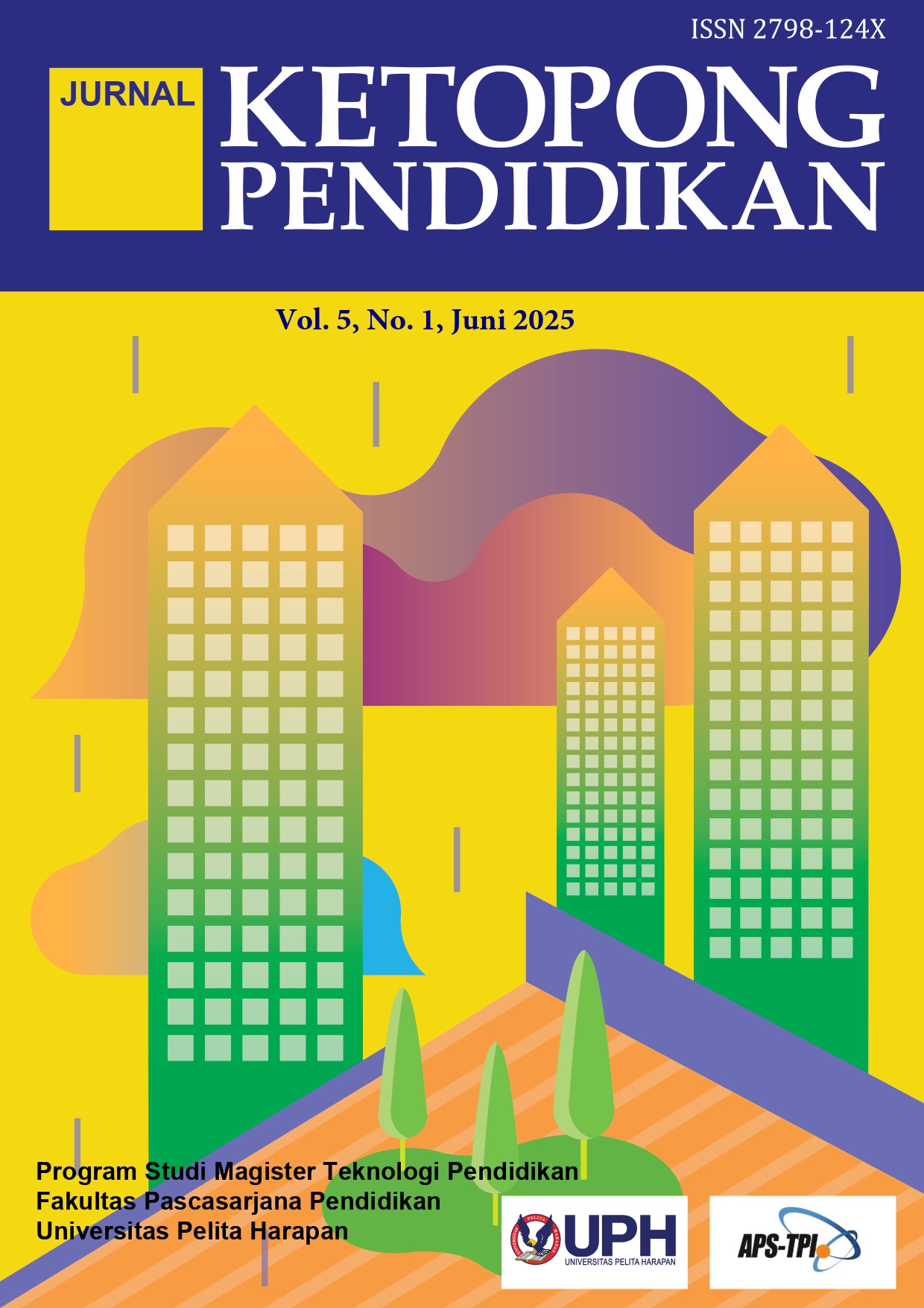Peran Pemimpin dalam Pengelolaan Perubahan dan Pengembangan Organisasi: Studi Kasus Pembinaan Guru Baru di SLH Sangihe [The Role of Leaders in Managing Change and Organizational Development: A Case Study of New Teacher Development at SLH Sangihe]
DOI:
https://doi.org/10.19166/jkp.v5i1.7745Keywords:
Change, Change Management, Leader, First Year Teachers, [Perubahan, Manajemen Perubahan, Pemimpin, Guru Tahun Pertama]Abstract
Education plays a crucial role in shaping individuals, and the success of a school organization is greatly inlfuenced by the roles of both leaders and teachers, particulary first-year teachers. At Sekolah Lentera Harapan Sangihe, first-year teachers face various challanges in adapting professionally and culturally. To address this, the school principal has taken strategic steps through induction and mentoring programs, aligned with the Change Pyramid concept, to support the effective transformation of new teacher roles. The study was designed to analyze the critical role of a leader in managing change and developing an organization, with an emphasis on a case study at SLH Sangihe that highlighted the difficulties in mentoring new teachers. The changes encompass various aspects, including adapting to educational developments, enhancing teaching quality, and meeting the needs of new teachers. The research method employed is qualitative, with a case study as the primary method. The research results indicate that SLH Sangihe is currently undergoing changes at the level of change tasks and change roles. The leader of SLH Sangihe opts for incremental change options on gradual improvements. As a result following the research, the implementation of educational strategies is deemed effective in managing internal changes as it aims to transform the values and beliefs of individuals, supporting the desired changes and committing to the organizational values.
References
Abdullah, C., & Suliyanthini, D. (2021). Perubahan perilaku konsumen di masa pandemi COVID-19. Equilibrium: Jurnal Pendidikan, 9(1), 18−24. https://doi.org/10.26618/equilibrium.v9i1.4316
Alhabsyi, F., Pettalongi, S. S., & Wandi, W. (2022). Peran kepemimpinan kepala sekolah dalam meningkatkan kinerja guru. Jurnal Integrasi Manajemen Pendidikan, 1(1), 11−19. https://doi.org/10.24239/jimpi.v1i1.898
Alifia, U., Pramana, R. P., & Revina, S. (2022). Tantangan guru muda pada tahun-tahun pertama mengajar. Rise Smeru.
Bashori, B. (2020). Konsep kepemimpinan abad 21 dalam pengembangan lembaga pendidikan tinggi Islam. PRODU: Prokurasi Edukasi Jurnal Manajemen Pendidikan Islam, 1(2), 110−125. https://scholar.uinib.ac.id/id/eprint/658
Burtonshaw-Gunn, S. A. (2008). The essential management toolbox: Tools, models and notes for managers and consultants. John Wiley & Sons.
Nasution, D. A., & Aslami, N. (2022). Fungsi manajemen perubahan dalam kemajuan suatu organisasi/perusahaan. SIBATIK JOURNAL: Jurnal Ilmiah Bidang Sosial, Ekonomi, Budaya, Teknologi, Dan Pendidikan, 1(8), 1411−1420.
https://doi.org/10.54443/sibatik.v1i8.183
Northouse, P. G. (2025). Leadership: Theory and practice. Sage Publications.
Pertiwi, N., & Atmaja, H. E. (2021). Literature review: Peran kepemimpinan dalam manajemen perubahan KBBI di organisasi. Jurnal Ekonomi dan Bisnis, 4(2), 576−581. https://doi.org/10.37600/ekbi.v4i2.324
Sanjaya, W. (2008). Kurikulum dan pembelajaran. Indonesia, Jakarta: Prenadamedia Group.
Suriyadi, S., & Azmi, F. (2022). Pengembangan manajemen resiko pada instansi pendidikan. Warta Dharmawangsa, 16(3), 543−553. https://doi.org/10.46576/wdw.v16i3.2246
Waedoloh, H., Purwanta, H., & Ediyono, S. (2022). Gaya kepemimpinan dan karekteristik pemimpin yang efektif. In Social, Humanities, and Educational Studies (SHES): Conference Series, 5(1), 144−152. https://doi.org/10.20961/shes.v5i1.57783
Downloads
Published
Issue
Section
License
Copyright (c) 2025 Rita Kristina

This work is licensed under a Creative Commons Attribution-ShareAlike 4.0 International License.
Authors who publish with this journal agree to the following terms:
1) Authors retain copyright and grant the journal right of first publication with the work simultaneously licensed under a Creative Commons Attribution License (CC-BY-SA 4.0) that allows others to share the work with an acknowledgement of the work's authorship and initial publication in this journal.
2) Authors are able to enter into separate, additional contractual arrangements for the non-exclusive distribution of the journal's published version of the work (e.g., post it to an institutional repository or publish it in a book), with an acknowledgement of its initial publication in this journal.
3) Authors are permitted and encouraged to post their work online (e.g., in institutional repositories or on their website). The final published PDF should be used and bibliographic details that credit the publication in this journal should be included.


